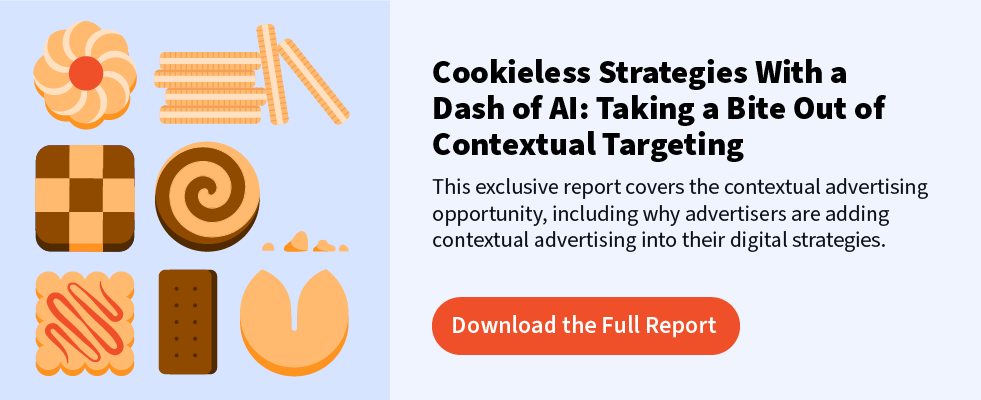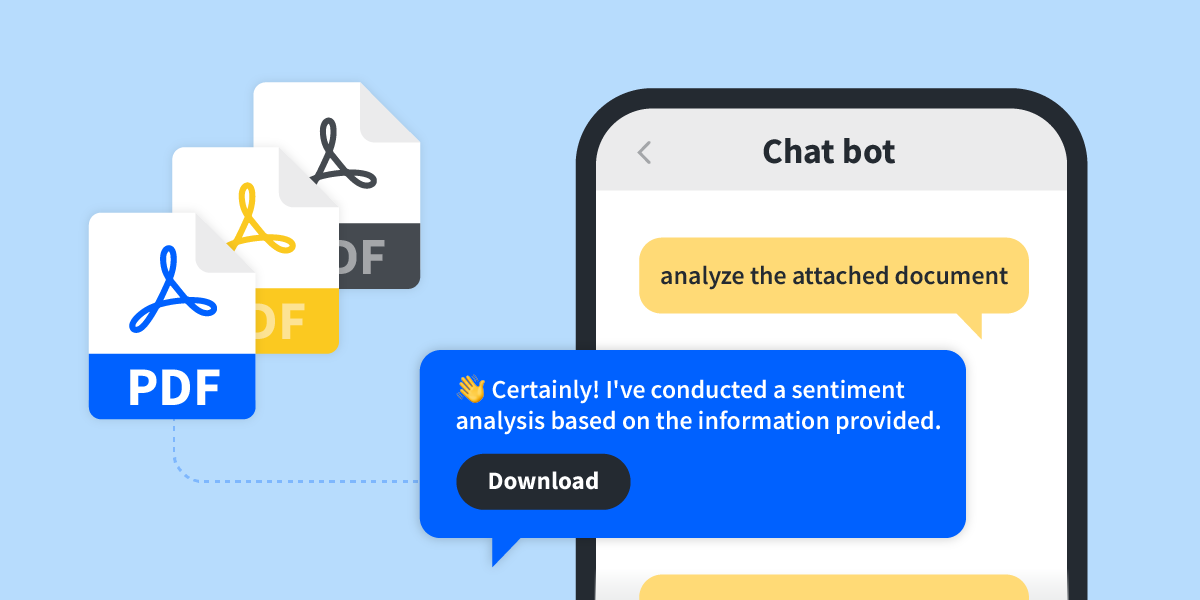It’s finally happening. Sort of.
After years of warnings, Google Chrome has officially begun phasing out 3rd-party cookies.
In early January, the company turned off cookies for 30 million Chrome users (or 1% of the platform’s total user base) and said they had plans to phase them out completely by end of 2024. (They’ve since delayed the change for a third time but promise to turn off 3rd-party cookies completely by 2025.)
Many browsers, like Mozilla’s Firefox and Apple’s Safari, have already moved to block 3rd-party cookies following increased concerns over data collection and subsequent privacy legislation. But, according to the Wall Street Journal, many advertisers still aren’t ready for a cookieless future.
Thankfully, cookieless advertising can help you drive performance in a post-cookie world.
What is Cookieless Advertising?
Cookieless advertising refers to the alternative strategies and methods advertisers use to target users without relying on 3rd-party data. The goal of cookieless advertising is to deliver relevant, personalized ads while respecting user privacy and adhering to data privacy regulations.
Understanding Cookieless Targeting
Cookieless targeting uses 1st-party data, anonymized data points, and AI and machine learning to target ads to users without compromising their privacy or violating regulations like the GDPR or CCPA.
When it comes to cookieless advertising, there are three main methods most digital marketing teams use to target users.
- Authenticated targeting is when an advertiser gains explicit consent from a user—often through a pop-up, login screen, or sign-up form—to use their data for advertising purposes.
- Anonymous targeting doesn’t use personal identifiers, like names or email addresses, and instead relies on alternative methods to segment and target specific audiences anonymously.
- Contextual targeting uses AI and machine learning to deliver ads based on the context of the webpage the user is viewing, with advertisers using keywords, topics, or categories to target their ads.
Many of these methods have been around for years. But we wanted to understand more about how teams were approaching programmatic advertising’s inevitable shift away from 3rd-party cookies.
The State of Cookieless Advertising
Recent studies show that marketers and publishers understand the value of moving away from 3rd-party cookies, but many still aren’t prepared for the change.
- According to HubSpot, less than half of marketers have a plan in place for cookie-free targeting.
- 71% of respondents to Econsultancy’s Future of Marketing survey agreed there were viable alternatives to 3rd-party cookie-based tracking, but only 8% felt “fully prepared” for the cookieless future.
- According to Digiday, 78% of publishers believe removing third-party cookies will make their audience data “more valuable”.
- 25% of respondents to an ID5 survey believe that 1st-party universal identifiers are the most viable and scalable solution for replacing 3rd-party cookies.
- Digiday says only 9% of publishers have a complete plan for the end of 3rd-party cookies.
Preparing for Cookieless Targeting
The programmatic landscape continues to evolve and face more limitations when it comes to using cookies.
There are still instances where cookies will continue to be relevant for marketers. For example, cookies can be used for 1st-party data collection and tracking when consent is given.
But advertisers need to adapt.
That’s why contextual targeting has emerged as a performance-driving targeting method for reaching the right audience, with US advertisers putting 28% of their targeting budget towards contextual data in 2024.
What is Contextual Advertising and How Does It Work?
Contextual advertising targets ads to users based on the content of the webpage a user is visiting.
With contextual advertising, a crawler scans a webpage’s content and metadata, analyzes it, and categorizes it using AI and machine learning. Then, when a visitor lands on a page, an ad is served to them based on the content they’re viewing, rather than using 3rd-party data or explicitly relying on personal identifiers. This makes contextual advertising an ideal solution for advertisers navigating a post-cookie world.
Contextual advertising has many benefits, including the ability to target niche audiences while they’re in the right frame of mind and getting access to real-time metrics. Contextual advertising is also a brand safe solution that’s perfect for building strong brand affinity with your audience.
3 Steps to Getting Started With Cookieless Advertising
The time to embrace cookieless advertising is now. Here are 3 steps you should take to successfully introduce cookieless advertising into your digital marketing strategy.
1. Prioritize Contextual Targeting
Proximic’s 2024 State of Programmatic Report found that 78% of advertisers planned to increase or continue relying on contextual targeting to target ads in a post-cookie environment. That’s great news. But what about the other 22%?
Success in programmatic advertising is dependent on testing and optimizing different campaign strategies. The sooner you can experiment with contextual targeting, the better off your campaigns will be in the long run.
Advertisers and marketers clearly understand the need for contextual advertising. But there’s a gap between acknowledging the need for it and adding it to their repertoire.
The widespread adoption of cookieless advertising solutions like contextual advertising is coming. Marketers should prioritize the implementation of contextual targeting tactics to ensure they don’t get left behind.
2. Educate Yourself About Cookieless Advertising
Digital marketing requires creative thinking and staying on top of the latest trends, technology, and channels. The best way to get ahead of industry changes is to invest time in learning and development.
Educating yourself and your media buyers on how to be successful in a cookieless environment could be the difference between continued campaign success and a dip in performance.
Having the right training and resources is important when implementing a new platform, tactic, or strategy.
If you want to level up your programmatic advertising skills, sign up for free courses. Or, if you want to learn more about contextual advertising in particular, watch this webinar on how to improve campaign performance with AI and contextual targeting.
3. Find the Right Programmatic Partner
Programmatic platforms that provide cookieless advertising, especially those that leverage machine learning and AI, are the best resources in times of uncertainty. They’re experts in the field, and know the best ways to learn and ramp up.
Your partner should understand the nuances of the industry and how to foster success in the post-cookie landscape. You’ll want them to have expertise in all areas of digital advertising, including which channels, data providers, and ad formats to leverage and prioritize. Tapping into their knowledge and platform functionality is the best way to break into the contextual advertising space more efficiently.
Add Contextual Advertising to Your Media Mix
The shift away from 3rd-party cookies is finally underway. Advertisers need to prepare for a future without cookies.
The best way to ensure a seamless transition is to get started with contextual advertising. Request a demo to get started.






